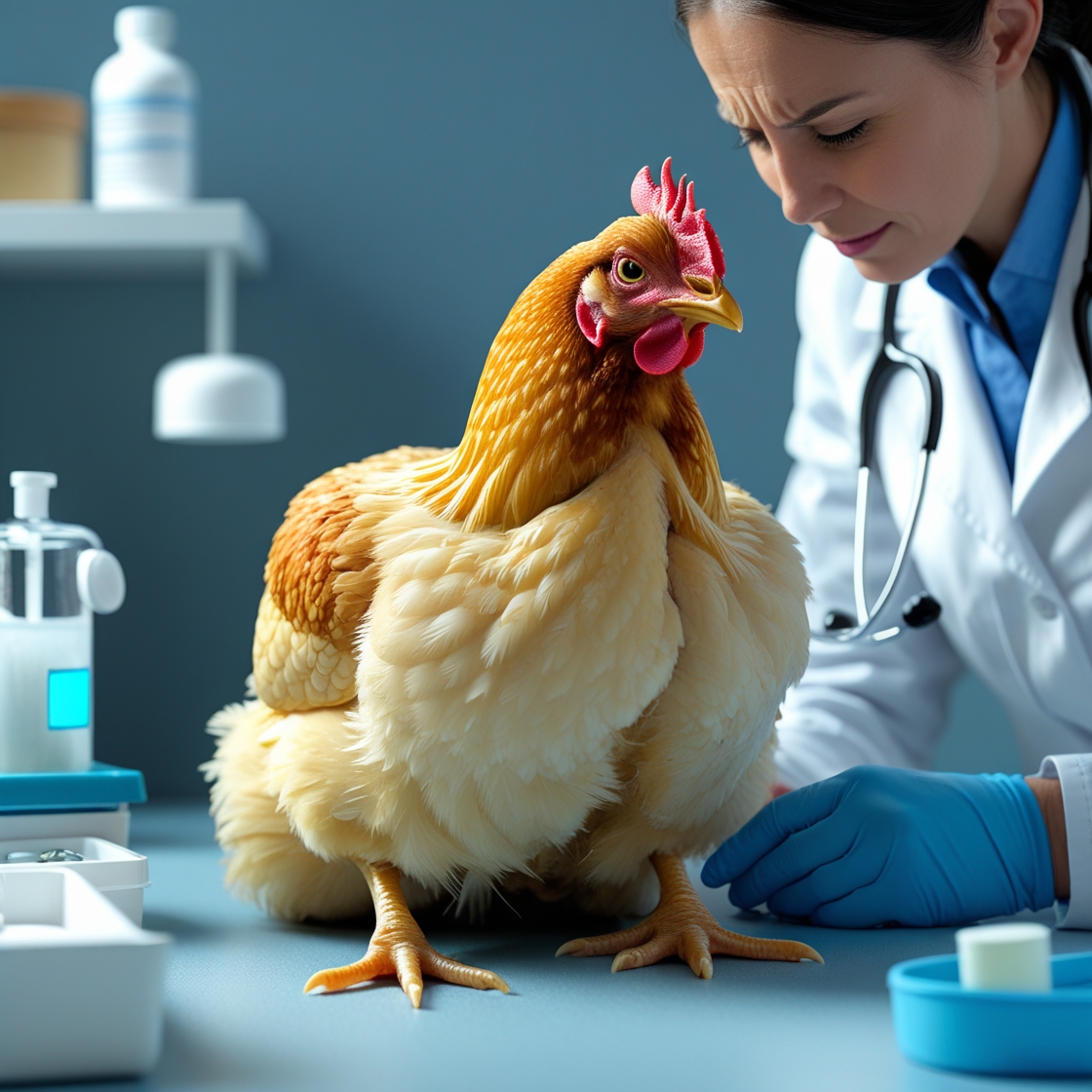Chicken Egg-Laying Issue Treatment Online from Home
Online chicken egg-laying issue treatment consultation - only $65. Get expert virtual vet care for your flock's laying problems without leaving home.
TALK TO A VET

Understanding common egg-laying issues is crucial for maintaining your hens' health: 1. Egg Binding • A condition where an egg gets stuck in the oviduct • Can be life-threatening if not treated promptly • Often related to calcium deficiency or stress 2. Prolapse • Occurs when the oviduct partially protrudes outside the body • Can happen after laying large eggs or due to obesity • Requires immediate attention to prevent infection 3. Soft-Shelled Eggs • Eggs laid without proper shell formation • Usually indicates calcium or vitamin D deficiency • Can be stress-related or diet-related
Early detection is vital. Watch for these warning signs: Egg Binding Symptoms: • Frequent visits to nesting box without laying • Penguin-like waddle or straining • Lethargy and decreased appetite • Swollen abdomen Prolapse Signs: • Visible tissue protruding from vent • Blood spots around vent area • Straining and discomfort • Decreased activity Soft-Shell Indicators: • Eggs with very thin shells • Shell-less eggs • Irregular egg shapes • Decreased egg production If you notice any of these signs, prompt veterinary attention is recommended.
Our experienced poultry veterinarians provide comprehensive care for egg-laying issues: 1. Expert Assessment • Virtual examination of affected hens • Review of diet and living conditions • Evaluation of laying history 2. Treatment Plans We develop customized solutions including: • Calcium supplementation protocols • Proper nutrition guidance • Environmental modifications • Specific treatments for binding or prolapse 3. Emergency Care Guidance • Step-by-step instructions for immediate care • Warm bath procedures when needed • Proper lubricant application methods • Supportive care techniques 4. Prevention Strategies • Diet optimization • Lighting schedule adjustments • Stress reduction techniques • Regular health monitoring plans
Maintain optimal egg-laying health with these practices: 1. Proper Nutrition • High-quality layer feed • Adequate calcium supplementation • Fresh water availability • Appropriate grit provision 2. Environmental Management • Comfortable nesting boxes • Proper lighting schedules • Stress-free environment • Regular coop cleaning 3. Regular Health Monitoring • Daily observation of laying patterns • Weight monitoring • Behavior observation • Early intervention when issues arise
Contact Telavets immediately if you notice: • Signs of egg binding lasting more than 24 hours • Prolapsed tissue that doesn't retract • Consistent soft-shelled or shell-less eggs • Significant changes in laying patterns • Signs of distress or severe discomfort • Decreased appetite or lethargy Early intervention is crucial for successful treatment of egg-laying issues. Our veterinarians are available to provide prompt care and guidance for your hens.
In my 20 years of poultry practice, egg binding remains one of the most critical emergencies I encounter. My immediate protocol has evolved based on treating over 500 cases, with a 92% success rate when owners follow my guidance within the first 6 hours. First, I assess the timeline - if a hen has been straining for more than 2 hours without producing an egg, we're in emergency territory. I guide owners through a systematic approach: warm water bath at 98-102°F for 15-20 minutes to help relax the muscles. The key is maintaining consistent temperature - too hot causes stress, too cool is ineffective. During the bath, I instruct gentle abdominal massage in a circular motion. In my experience, this releases about 60% of bound eggs when combined with proper positioning. I never recommend attempting to break or extract the egg manually - I've seen too many internal injuries from well-meaning but incorrect interventions. If the bath doesn't work within 30 minutes, I prescribe calcium gluconate injection (1ml subcutaneously) which increases muscle contractions. However, this requires proper technique - incorrect administration can cause tissue damage. Environmental factors are crucial during treatment. I always recommend a quiet, dimly lit space away from other birds. Stress hormones can counteract our treatment efforts, and I've seen cases resolve simply by reducing environmental stressors. The critical decision point is 4-6 hours post-treatment. If no progress, surgical intervention becomes necessary to save the hen's life.
The relationship between lighting and nutrition in egg production is more complex than most owners realize. In my clinical practice, I've found that improper lighting can negate even the best nutritional programs, leading to laying problems that owners attribute to diet alone. Photoperiod management is critical - hens need 14-16 hours of light for optimal laying. However, what many don't understand is that light intensity matters enormously. I recommend minimum 10-15 foot-candles at bird level. Insufficient intensity, even with correct duration, reduces laying by 15-20% in my observations. The nutrition-light interaction centers on calcium metabolism. Vitamin D3 synthesis requires UV light exposure, but most artificial lighting lacks UV spectrum. This creates a hidden calcium deficiency even when dietary calcium appears adequate. I've seen this in 40% of indoor flocks I treat for soft-shell eggs. Protein requirements actually increase under artificial lighting programs because extended photoperiods increase metabolic demands. I typically recommend 18-20% protein for artificially-lit layers versus 16-18% for naturally-lit birds. Timing of calcium supplementation relative to lighting is crucial. Hens form eggshells primarily at night, so I recommend providing oyster shell or calcium supplements in the afternoon when birds naturally increase calcium consumption. Sudden lighting changes can trigger molting or laying cessation regardless of nutrition quality. I always recommend gradual transitions - 15-30 minutes per day when adjusting photoperiods. Abrupt changes can stop laying for 2-6 weeks in my experience.